Essay on Yoga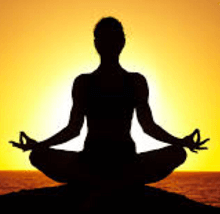
Yoga is both a technique and a method of keeping a healthy lifestyle. It is an insight meditation predicated on an extremely poignant technology that aims to bring physical and mental health into balance. Each yoga practice movement is essential for increasing mobility, endurance, stability, and peace. It is an excellent starting point for a balanced and healthy lifestyle that can be learned through basic yoga process video tutorials and local yoga programs. Yoga is a form of exercise therapy that helps to mentally stabilize the mind and body. It began thousands of years ago and is still performed by people today. Yoga incorporates physical activity, relaxation, and inhalation methods. Meaning of YogaYoga is taken from the Sanskrit term Yuj, which means to connect or merge. Yoga, according to Yogic texts, contributes to the union of conscious experience with those of the World Awareness, implying complete peace among the brain - spirit, Mankind and Environment. History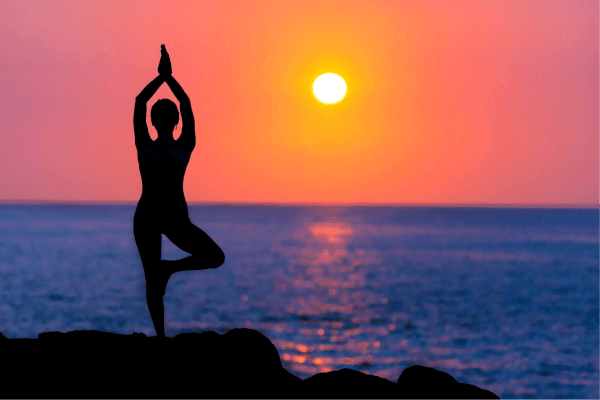
The term yoga appears for the first time in ancient Indian literature, the Rig Veda, which goes back to roughly 1500 BC. It is impossible to determine specific dates since the Vedic were originally given back verbally from successive generations. Yoga techniques and practices were passed down orally from instructors to students. Patanjali jumped on board within the first century with the Upanishads. Outside of its inception in the Vedic Period, there is insufficient agreement on the timing and origins of pranayama. Different primary ideas explained the beginnings of yoga. Based on the integration theory, yoga is a blend of indigenous, non-Vedic practices and Ved components. This paradigm is widely used in Western academia. Yoga Asanas and their BenefitsSukhasana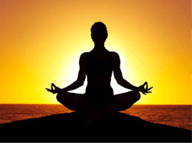
This asana extends further than the tangible perspectives and provides divine joy. Sukhasana makes an excellent choice for novices because it provides the needed comfort. Sukhasana is ideal for reducing stress, pressure, and emotional exhaustion. Naukasana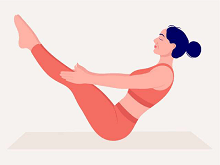
This asana strengthens the muscles and tendons while improving the digestive process and decreasing stomach fat. It is beneficial to increase the efficacy of the core muscles. It encourages the well-being of all abdominal muscles, particularly the liver, pancreas, and kidneys, as well as the strength of the forearms, legs, and shoulders. Kakasana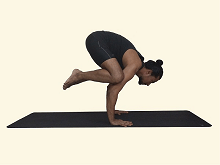
Anyone who wishes to increase their attention, eliminate slowdowns, and increase physical and emotional equilibrium should practise kakasana, which relaxes the tissues of the wrists, elbows, and hands. The stance lightens the physical and mental health. It pulls the dispersed thoughts altogether. Bhujangasana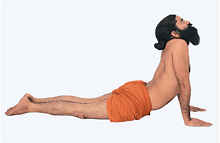
It is regarded as a deformation compensator and keeps the spinal supple. The asana's arc shape stimulates the deeper lower back, spine, and nerves. It is an excellent asana for persons suffering from lower abdominal stiffness and pain. It relieves stress by stimulating the adrenal glands & kidneys. Halasana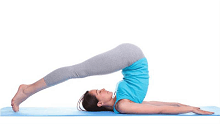
As it strains the spine tissues, the Halasana expands the spine cord and strives to maintain the spine unit healthy. The stretch relieves suspense in the forearms, shoulders, and spinal column. Sarvangasana
This asana engages and rejuvenates the full body. It promotes metabolic, muscle growth and blood flow by involving the internal organs. Those suffering from back discomfort can benefit from this asana because it strengthens the spine. It may even relieve back problems if practised consistently and with the right procedure. Shirsasana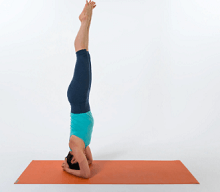
This is the monarch of the yoga poses, a challenging asana with important advantages. It enhances blood flow, respiration endurance, focus, and recollection. Types of Yoga1. Karma Yoga This instructs us to conduct altruistic tasks and obligations rather than become connected to or greedy for just any rewards. In Western society, this method is called Self-control of Activities. It's among the four major paths of Meditation. 2. Jnana Yoga It helps people learn to integrate with their inner feelings by practising various psychological methods like deep thinking, mind concentration and self-questioning exercises. 3. Kriya Yoga Kriya Yoga is a fundamental behavioural method for cutting emissions and oxygenating the human blood flow. It is a regular exercise in which many body postures are conducted using power relaxation techniques. This improves the brain's functioning ability, remembering sharpens, and an individual doesn't usually feel tired. 4. Bhakti Yoga It's also referred to as Mental Yoga. It relates to heavenly love because compassion and dedication represent the most important paths to personal enlightenment. It focuses on cultivating sympathetic emotions and cleaning the real self. This results in heart cleansing. Tradition1) Jain Yoga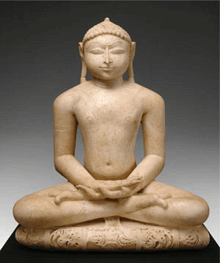
Jain religion is founded on a severe rule of kindness, ritual purity, charity, trust in the three gems, diet, and pranayama. Garuda is the term given by Jainism to the Meditation of personality and concentration of mind, body, and speaking, which allows one to govern the land, water, flame, and wind. Yoga has long been a staple of Jainism. Jainism believes in multiple separate selves, each bound by their karma. One can become pure and liberated only by reducing the effects of karma and eliminating the accumulated karmas. 2) Buddhists Yoga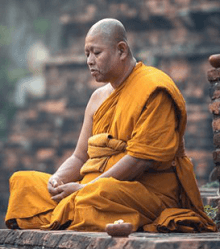
Buddhist yoga includes several techniques aimed at developing the 37 supports to enlightenment. Its overall purpose is bodhi, or happiness, historically understood as the permanent cessation of pain and reawakening. Other parts of the Path to Enlightenment, such as morality, correct activity, feeling control, and proper perspective, were considered to support this yoga and Meditation. A conservative Theravada school made various theories on mindfulness and yoga through its early works, the far more prominent among which is the Visuddhimagga. 3) Kundalini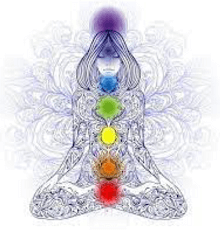
Kundalini yoga is clearly tied to hatha yoga and is frequently portrayed as a separate practice. Kundalini yoga, as per Georg Feuerstein, focuses on contemplative absorption. Kundalini yoga uses breathing and physical practices to activate physiological and divine energy, linking it with the spiritual world. Its objective is to awaken your Kundalini energy, also known as shakti. This is supernatural energy supposed to reside at the bottom of your spine. Ideologyi) SoteriologyAccording to the Yoga school of Hinduism, neglect is the root of all sorrow. Like numerous other systems of thought, liberty eradicates blindness by racist and discriminatory judgment, understanding, and self-awareness. The Yoga Sutras is the Yoga school's discourse on how to do this. Patanjali continues by emphasizing that over limbs of yoga are required to achieve identity, independence, and happiness. ii) EpistemologyYoga, like Samkhya, regards Pratyaka, Anumna, and Sabda as the sole genuine means of knowing or Pramana.
Patanjali's Scriptural TextsThe Yoga Scriptural texts of Patanjali, whose earliest form might have been the Ptajalayogastra-sankhya-pravachana, are one of the most well-known early manifestations of Brahminical meditation thinking. Many analysts believed that this featured the scriptures and a discussion. The Yoga Mantras are inspired by the Sramana cultures of Buddhism and Jainism, and they may represent yet another Brahmanical effort to incorporate yoga into those faiths. Patanjali's Yoga Scriptural texts are often regarded as the earliest collection of yogic ideology. The Yogic spiritual text lines are brief. Many subsequent Indian intellectuals examined and created a commentary on them, including the Vyasa Bhashya. Time for YogaIt is suggested that you rise between 4 and 5 a.m., while the remainder of the world has still been sleeping, and practise Meditation and asana. In today's environment, it is advised that you do Meditation either the first thing each morning or earlier in the sunset. Benefits of Morning Yoga
The Advantages of late afternoon Meditation
As you can see, there are many advantages to both types of practice time. Early ReferenceThe Vedas, the only scriptures left from the early Vedic times and compiled around 900 BCE, specifically refer to yogic practises mainly associated with monks and nuns on the outskirts of Brahmanism. The Atharvaveda and the Brahmanas discuss methods for regulating respiration and essential resources. The Rigveda's newest part, the Kein hymn, which was compiled in approximately 1000 BCE, contains the oldest mention of a stranger doing yoga. However, that didn't become part of the Brahminic elite. As per Whicher 1998, research typically overlooks the relationship between the rishi's meditative activities and subsequent yogic practices. The primitive Vedic sadhus are an ancient kind of ritual Meditation people with several features of modern Meditation such as attention and contemplative awareness. In 2018, Jacobsen published an article stating that body postures are closely linked to the discipline of tapas, and monastic activities in Vedic history and were carried out by ancient church officials in their plan for ritual performance. The ascetic techniques may be the ancestors of yoga. Per Bryant, conventional relaxation techniques initially existed in Hindu scriptures (Upanishad). Pranayama is stated in the song of the Brihadaranyaka Vedanta, and pratyahara is referenced in the chorus of the Chandogya Upanishad. Eight Limbs of Yoga1. YamasYamas in Sanskrit stand for restraint. The Yamas are five distinct constraints and moral standards outlined in Hindu and Jain religious scriptures. Nonviolence, honesty, non-stealing, non-excess in eating, non-agitation regarding pain, humility, and empathy are among the most frequently cited Yamas. 2. NiyamaNiyama is frequently translated as beneficial responsibilities or observances and is considered as suggested routines for better health and intellectual life. Niyama refers to acts and behaviours suggested for healthy lifestyles, spiritual growth, and a free condition of being. Hygiene, contentment, sanity, identity, and devotion to a divine creator are among the five Niyamas described in Yoga Sutra. 3. AsanaAn asana is a body stance, initially and currently a common name for a seated concentration position, but eventually expanded to every kind of position used in relaxation techniques and contemporary yoga as a workout, including sitting, upright, reversed, bending, and stabilizing positions. 4. PranayamaPranayama is a traditional respiratory practice derived from Indian yoga. It entails managing your respiration in various forms and durations. In healthy young people, pranayama decreased observed psychological stress. People who practised pranayama were less anxious while attempting a test. 5. PratyaharaPratyahara, or the assembling together, is the fifth step of Patanjali's Ashtanga Yoga, as described in their notable piece, Meditation Sutras of Patanjali. It relaxes the brain, reduces individual attention, and restores the disrupted circulation of prana. Pratyahara must be utilized to relax and lose control of emotions. 6. DharanaDharana practice entails focusing attention on a certain object. It relates to sustained attention. As detailed in the Yoga Meditation, Dharana is the sixth of Patanjali's Eight Limbs of Yoga. Dharana practice progresses the learner to dhyana, the next level of Ashtanga yoga. Dharana is the discipline of focusing on a particular topic, and pranayama is the condition of absolute focus. 7. Ghana/DhyanaDhyana yoga is also known as contemplation yoga in Hindu Mythology. Dhyana meditation helps to discover the reality. It teaches you to keep your thoughts off the trivial and focus on what is important. Intense attention produces self-awareness that delivers all necessary solutions. 8. SamadhiSamadhi is an intense and completely energy absorption meditation of the ultimate, free of craving, rage, or every other non-self idea or feeling. It comprises a yoga student attaining spiritual understanding, in which the body, brain, and subject of concentration all melt into the same. Facts about Yoga
International Yoga DayThe International Day of Yoga, usually celebrated on June 21, strives to enhance public awareness and understanding of the numerous advantages of yoga practice.
Next TopicHonesty is the Best Policy Essay
|
 For Videos Join Our Youtube Channel: Join Now
For Videos Join Our Youtube Channel: Join Now
Feedback
- Send your Feedback to [email protected]
Help Others, Please Share









